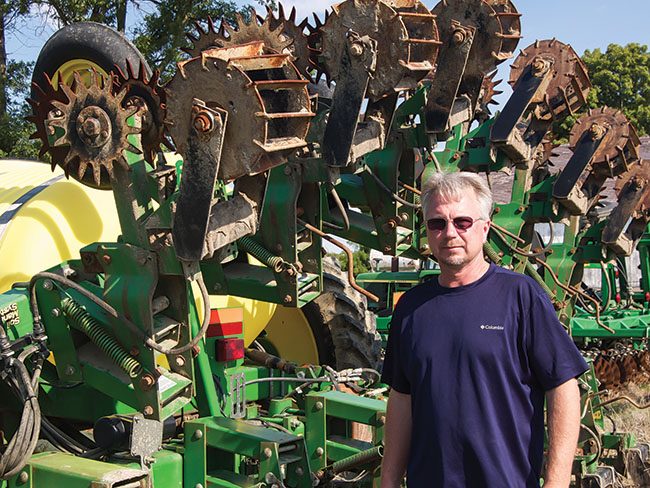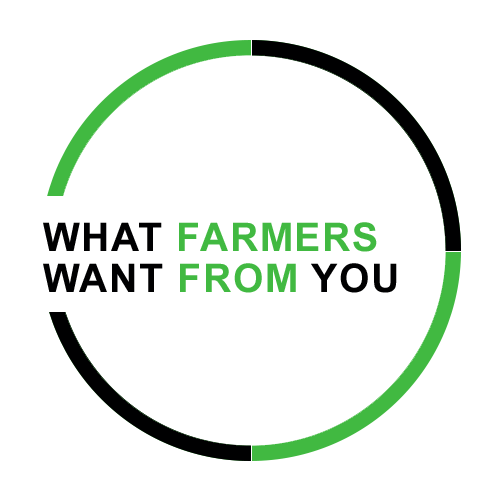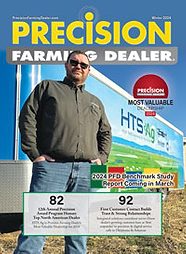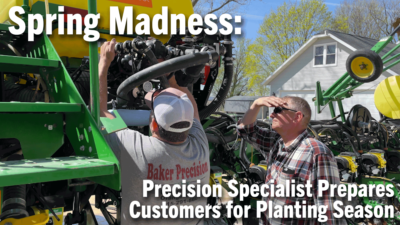Todd Mooberry, who farms with his daughter, MacKencie, near Lowpoint, Ill., understands that balance. They grow 1,800 acres of strip-tilled corn and no-tilled soybeans. Mooberry also sells tillage equipment and provides occasional sales and service support for his precision farming equipment dealer, while his daughter sells hybrid seed. These ag-related jobs help them to stay at the forefront of tillage and hybrid trends.
“Our first auto-steer unit cost $30,000 and it only offered steering control,” Mooberry says. “Now you can get a unit for $20,000 that can be used for everything. Prices are coming down, but it still is an expensive proposition.”
Today, they use an Ag Leader Integra monitor and an RTK correction signal from the DigiFarm virtual base network. “We are a host for one of their physical base stations,” Mooberry says. “It’s less expensive than subscriptions to various signal providers.”
The Mooberrys have strip-tilled for more than a decade, adapting equipment for their highly variable fields. Mooberry uses an 8-row Orthman 1tRIPr strip-till unit outfitted with concave baskets.
During a fall strip-till pass, they deep-place phosphorous and potash supplied by a single-hopper Montag cart. “We will variable-rate that fertilizer blend according to soil type, but in the future, I want to get a two-bin cart so we can variable-rate phosphorous and potassium based on our zones,” Mooberry says.
In the spring, they apply 12-15 gallons per acre of 32% nitrogen ahead of the planter pass with a Yetter Strip Freshener that Todd helped develop. They sidedress additional nitrogen after emergence.
Todd Mooberry, strip-till farmer in Low Point, Ill., introduces his "strip-freshener" unit that he designed and is selling to Yetter for production. Runs in the spring over strips made in the fall to help them dry out and apply fertilizer to the strip. Also able to improve the ride of his planter, at least 8-10 percent.
They use an older 24-row John Deere planter extensively upgraded with Precision Planting RowFlow controls and an AirForce down-force system and variable-rate seed based on field zones.
Mooberry says he is fortunate to have as much experience with the electronics side of the precision farming equipment.
“I can do most of the work myself, but I know other farmers aren’t so lucky,” he says. “The hardware is very reliable, even in the harsh working conditions, but the software can create some issues.”
Point of Pain: Upgrade Economics
Todd looks forward to his next equipment and precision farming upgrade, but only when it makes economic sense. One of his primary considerations before making an additional purchase is to research the return on investment.
“I am not sure there is enough difference with the new products to make it pay right now,” he says. “We will stick with what we have, but may look to upgrade our planter in the future.”
They have already upgraded their sprayer, going from a self-propelled unit to a 120 foot pull-behind unit with a three-section swath control that will be upgraded to six sections in 2015. Like the strip-till unit or the planter, the sprayer can be pulled with their Deere 8300 or 8400 tractors that each have monitors.
What Farmers Want From You is a series of farmer profiles that examine the scope of precision farming tools individual farmers are using on their operation, along with the frustrations that can occur with adopting new technology and how dealers can alleviate those "points of pain" for farm customers. For the latest additions to the series, visit our What Farmers Want From You feed.
“They are set up identically so we can continue working with the other tractor without changing settings if one tractor goes down,” he says.
They also upgraded to a Deere S670 combine last year, which came with Ag Leader yield sensors that allows them to plug in the Integra monitor with no modifications.
While Mooberry keeps current on the latest technology, he acknowledges that having a tech savvy and experienced precision dealer is an important asset, especially when it comes to considering different purchasing options.
One thing Mooberry is thinking more about is data compatibility and he can bounce questions off this precision dealer, to make sure he has the right system in place, rather than make an investment and regret it later.
“It’s tempting to change systems when tractor companies roll the price of their precision systems into the cost of the equipment,” he says. “But we want to make sure the data is compatible with what we have.”








Post a comment
Report Abusive Comment